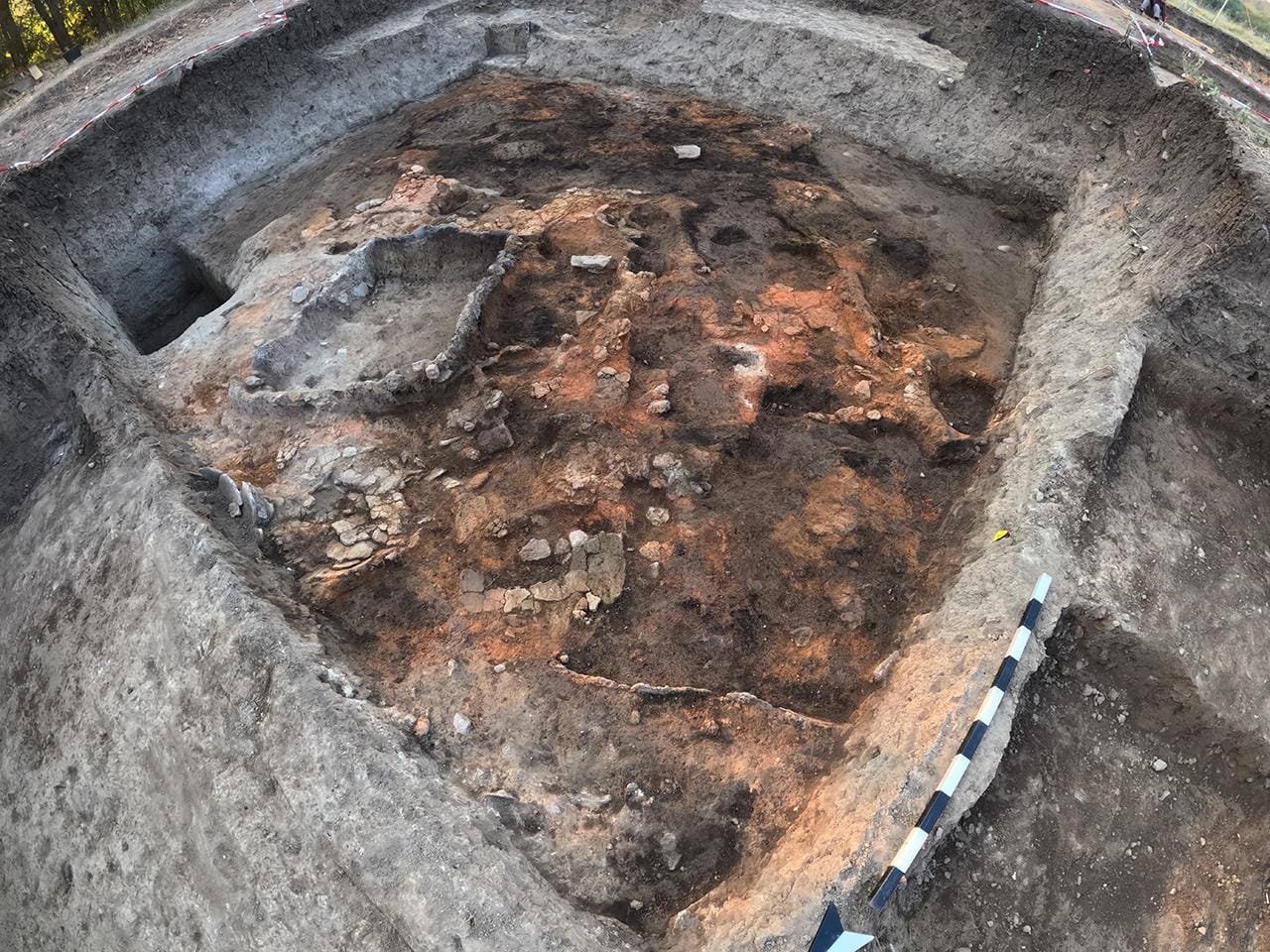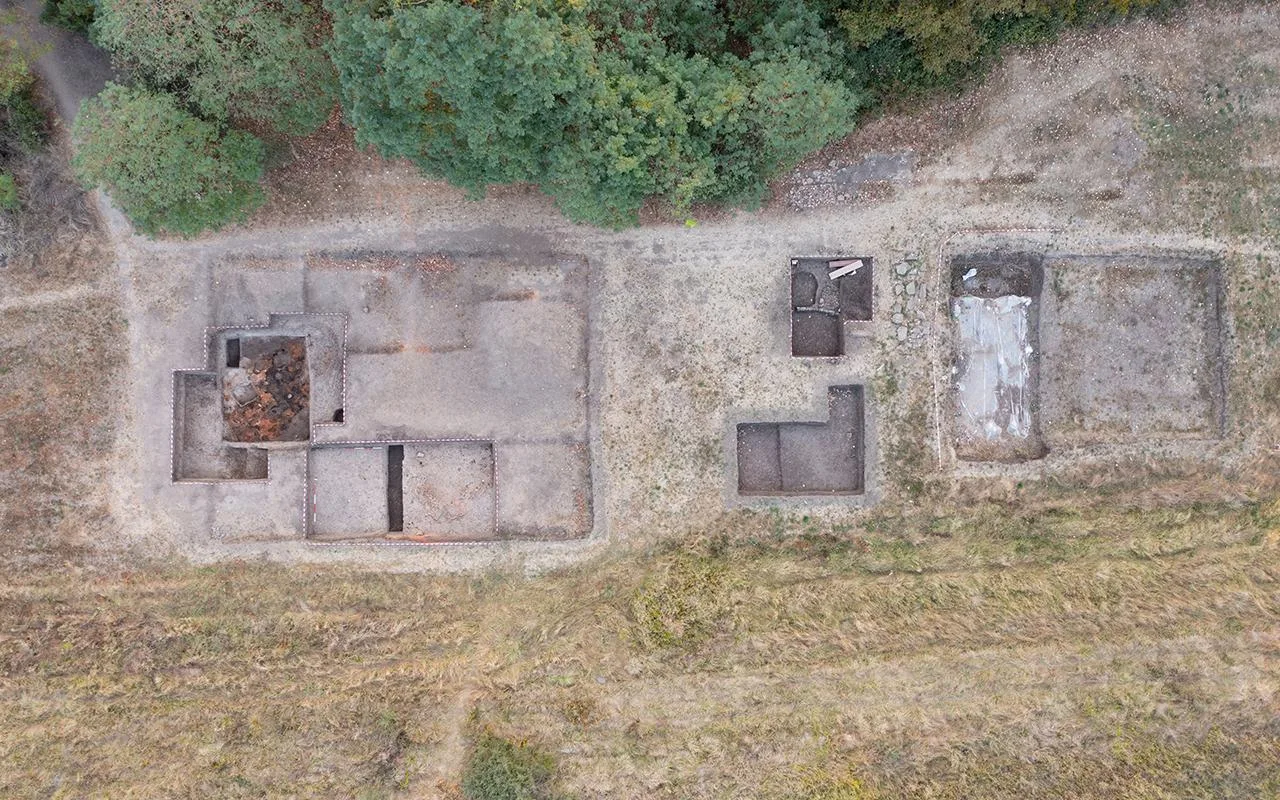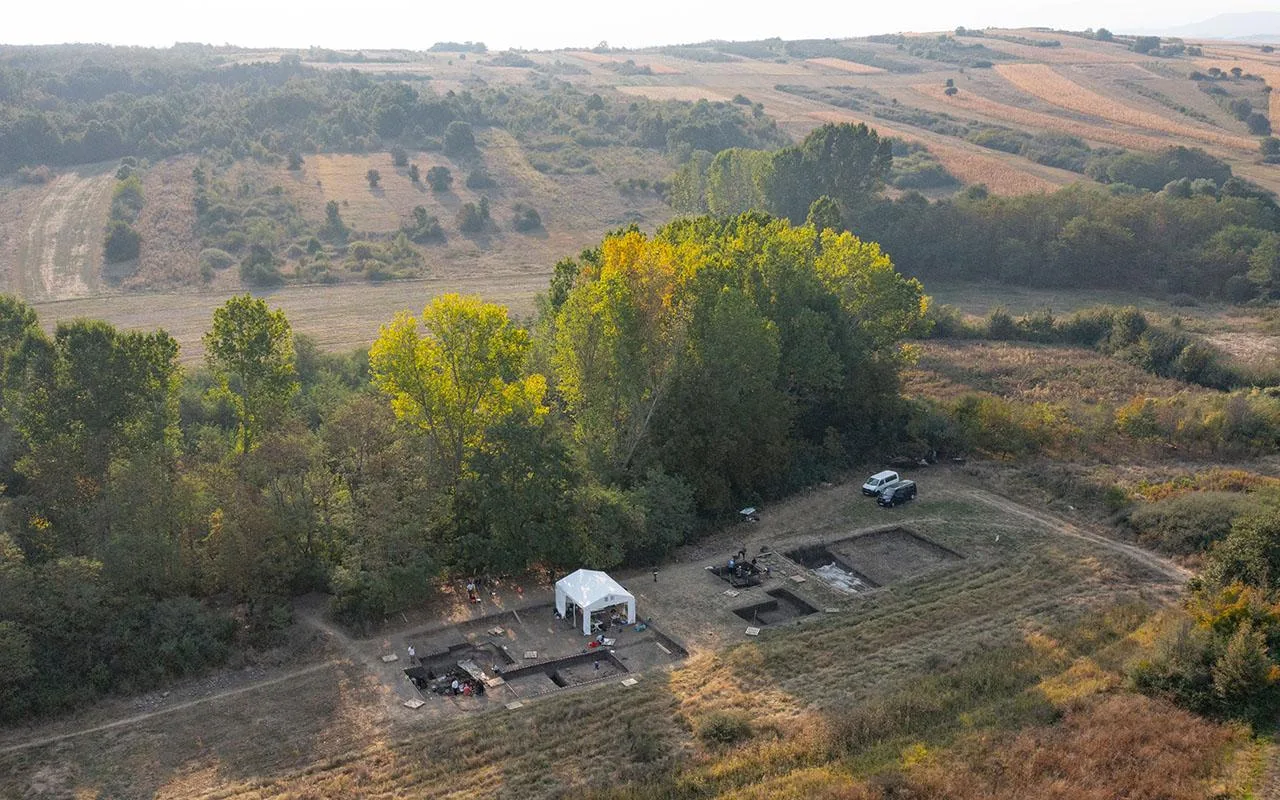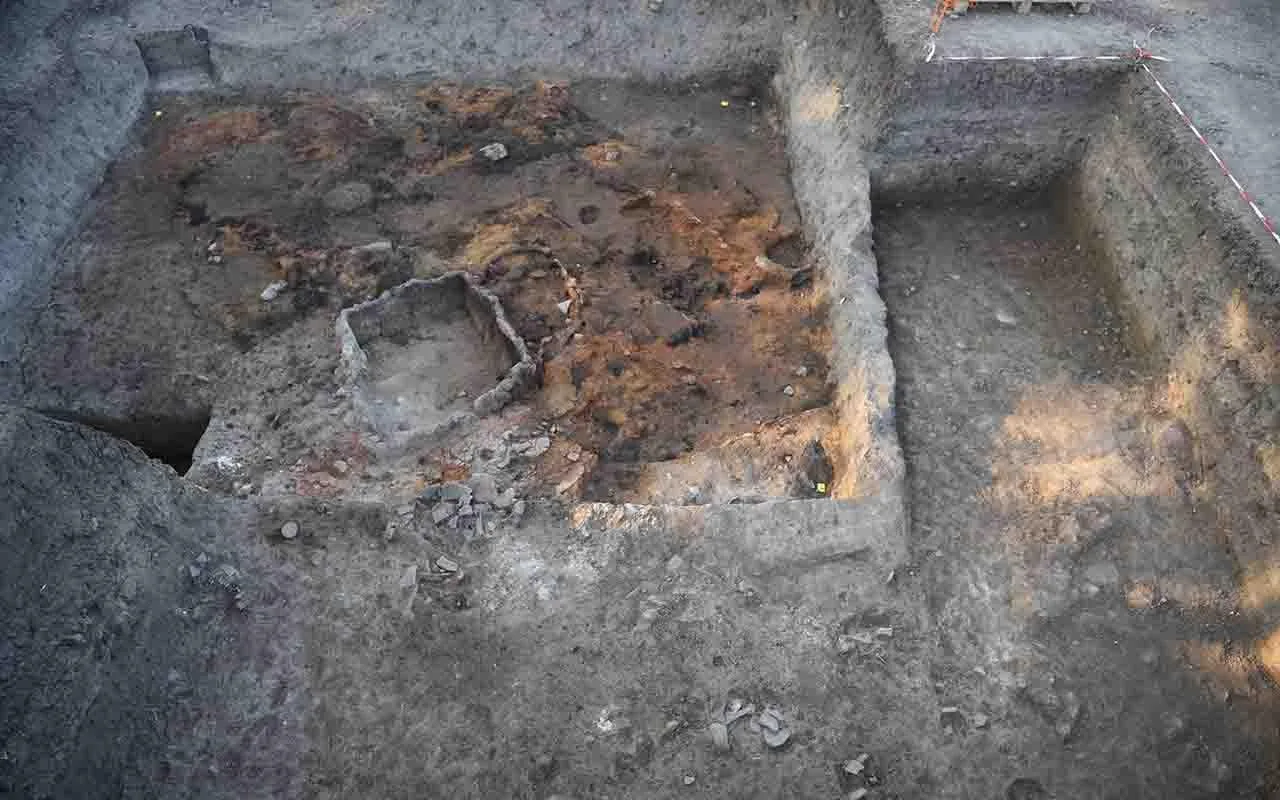-
As of today ICMag has his own Discord server. In this Discord server you can chat, talk with eachother, listen to music, share stories and pictures...and much more. Join now and let's grow together! Join ICMag Discord here! More details in this thread here: here.
-
ICMag and The Vault are running a NEW contest in October! You can check it here. Prizes are seeds & forum premium access. Come join in!
You are using an out of date browser. It may not display this or other websites correctly.
You should upgrade or use an alternative browser.
You should upgrade or use an alternative browser.
Shiva Grows
- Thread starter shiva82
- Start date
zaprjaques
da boveda kid
They found Shiva’s dream home in Serbia
October 23, 2024

 archaeologymag.com
archaeologymag.com
A team of Austrian and Serbian archaeologists, led by the Austrian Academy of Sciences (ÖAW), has unearthed an 8,000-year-old rectangular dwelling in Svinjarička Čuka, an area associated with the Starčevo culture, one of Europe’s earliest farming societies.
 The excavation sections after completion of the excavations in 2024 on the river terrace of Svinjarička Čuka, Serbia. Credit: M. Börner / ÖAI / ÖAW
The excavation sections after completion of the excavations in 2024 on the river terrace of Svinjarička Čuka, Serbia. Credit: M. Börner / ÖAI / ÖAW
The Starčevo culture, which thrived between 6200 and 4500 BCE, is part of the larger Starčevo-Körös-Criş cultural complex and played a pivotal role in the spread of agriculture from Anatolia to Europe. The discovery challenges long-standing theories about the early settlers of Europe, previously thought to have lived nomadic or semi-nomadic lifestyles.
“The discoveries at Svinjarička Čuka provide groundbreaking insights that challenge previous models on settlement development in the Balkans,” said Barbara Horejs, archaeologist and scientific director of the Austrian Archaeological Institute at the ÖAW. Previous assumptions that these early groups were nomadic or seasonally sedentary were based on the widespread presence of pits thought to represent temporary shelters. However, this new discovery suggests otherwise.
 The Svinjarička Čuka site during the 2024 excavations. Credit: M. Börner / ÖAI / ÖAW
The Svinjarička Čuka site during the 2024 excavations. Credit: M. Börner / ÖAI / ÖAW
The dwelling, constructed from wickerwork reinforced with wooden posts, was exceptionally well-preserved due to a fire. The partially collapsed and burned elements of the structure revealed overlapping floors, tools, and scattered vessels, both inside the house and in the outdoor area. More importantly, designated areas for food storage, such as grain and seeds, were found, indicating that these early farming communities were not merely transient but had developed a stable, sedentary lifestyle.
 Burnt remains of a house of Neolithic pioneers around 8000 years ago in Svinjarička Čuka. Credit: F. Ostmann / ÖAI / ÖAW
Burnt remains of a house of Neolithic pioneers around 8000 years ago in Svinjarička Čuka. Credit: F. Ostmann / ÖAI / ÖAW
“Instead of small, nomadic groups or only seasonally settled communities, the Neolithic pioneers in the Balkans built stable houses with provisions for food storage,” Horejs added. This suggests a more permanent, agrarian society than previously thought, with advanced systems for grain storage and food supplies, integral to their survival and development.
8,000-year-old dwelling found in Serbia belonged to Europe’s first sedentary farmers
by Dario RadleyOctober 23, 2024

8,000-year-old dwelling found in Serbia belonged to Europe's first sedentary farmers
Archaeologists have unearthed an 8,000-year-old rectangular dwelling in Svinjarička Čuka, an area associated with the Starčevo culture
 archaeologymag.com
archaeologymag.com
A team of Austrian and Serbian archaeologists, led by the Austrian Academy of Sciences (ÖAW), has unearthed an 8,000-year-old rectangular dwelling in Svinjarička Čuka, an area associated with the Starčevo culture, one of Europe’s earliest farming societies.
 The excavation sections after completion of the excavations in 2024 on the river terrace of Svinjarička Čuka, Serbia. Credit: M. Börner / ÖAI / ÖAW
The excavation sections after completion of the excavations in 2024 on the river terrace of Svinjarička Čuka, Serbia. Credit: M. Börner / ÖAI / ÖAWThe Starčevo culture, which thrived between 6200 and 4500 BCE, is part of the larger Starčevo-Körös-Criş cultural complex and played a pivotal role in the spread of agriculture from Anatolia to Europe. The discovery challenges long-standing theories about the early settlers of Europe, previously thought to have lived nomadic or semi-nomadic lifestyles.
“The discoveries at Svinjarička Čuka provide groundbreaking insights that challenge previous models on settlement development in the Balkans,” said Barbara Horejs, archaeologist and scientific director of the Austrian Archaeological Institute at the ÖAW. Previous assumptions that these early groups were nomadic or seasonally sedentary were based on the widespread presence of pits thought to represent temporary shelters. However, this new discovery suggests otherwise.
 The Svinjarička Čuka site during the 2024 excavations. Credit: M. Börner / ÖAI / ÖAW
The Svinjarička Čuka site during the 2024 excavations. Credit: M. Börner / ÖAI / ÖAWThe dwelling, constructed from wickerwork reinforced with wooden posts, was exceptionally well-preserved due to a fire. The partially collapsed and burned elements of the structure revealed overlapping floors, tools, and scattered vessels, both inside the house and in the outdoor area. More importantly, designated areas for food storage, such as grain and seeds, were found, indicating that these early farming communities were not merely transient but had developed a stable, sedentary lifestyle.
 Burnt remains of a house of Neolithic pioneers around 8000 years ago in Svinjarička Čuka. Credit: F. Ostmann / ÖAI / ÖAW
Burnt remains of a house of Neolithic pioneers around 8000 years ago in Svinjarička Čuka. Credit: F. Ostmann / ÖAI / ÖAW“Instead of small, nomadic groups or only seasonally settled communities, the Neolithic pioneers in the Balkans built stable houses with provisions for food storage,” Horejs added. This suggests a more permanent, agrarian society than previously thought, with advanced systems for grain storage and food supplies, integral to their survival and development.
shiva82
Well-known member
amazing placeThey found Shiva’s dream home in Serbia
8,000-year-old dwelling found in Serbia belonged to Europe’s first sedentary farmers
by Dario Radley
October 23, 2024

8,000-year-old dwelling found in Serbia belonged to Europe's first sedentary farmers
Archaeologists have unearthed an 8,000-year-old rectangular dwelling in Svinjarička Čuka, an area associated with the Starčevo culturearchaeologymag.com
A team of Austrian and Serbian archaeologists, led by the Austrian Academy of Sciences (ÖAW), has unearthed an 8,000-year-old rectangular dwelling in Svinjarička Čuka, an area associated with the Starčevo culture, one of Europe’s earliest farming societies.
The excavation sections after completion of the excavations in 2024 on the river terrace of Svinjarička Čuka, Serbia. Credit: M. Börner / ÖAI / ÖAW
The Starčevo culture, which thrived between 6200 and 4500 BCE, is part of the larger Starčevo-Körös-Criş cultural complex and played a pivotal role in the spread of agriculture from Anatolia to Europe. The discovery challenges long-standing theories about the early settlers of Europe, previously thought to have lived nomadic or semi-nomadic lifestyles.
“The discoveries at Svinjarička Čuka provide groundbreaking insights that challenge previous models on settlement development in the Balkans,” said Barbara Horejs, archaeologist and scientific director of the Austrian Archaeological Institute at the ÖAW. Previous assumptions that these early groups were nomadic or seasonally sedentary were based on the widespread presence of pits thought to represent temporary shelters. However, this new discovery suggests otherwise.
The Svinjarička Čuka site during the 2024 excavations. Credit: M. Börner / ÖAI / ÖAW
The dwelling, constructed from wickerwork reinforced with wooden posts, was exceptionally well-preserved due to a fire. The partially collapsed and burned elements of the structure revealed overlapping floors, tools, and scattered vessels, both inside the house and in the outdoor area. More importantly, designated areas for food storage, such as grain and seeds, were found, indicating that these early farming communities were not merely transient but had developed a stable, sedentary lifestyle.
Burnt remains of a house of Neolithic pioneers around 8000 years ago in Svinjarička Čuka. Credit: F. Ostmann / ÖAI / ÖAW
“Instead of small, nomadic groups or only seasonally settled communities, the Neolithic pioneers in the Balkans built stable houses with provisions for food storage,” Horejs added. This suggests a more permanent, agrarian society than previously thought, with advanced systems for grain storage and food supplies, integral to their survival and development.
shiva82
Well-known member
this is the beginning of the end for humanity possibly . the moment we stopped being hunter gatherersThey found Shiva’s dream home in Serbia
8,000-year-old dwelling found in Serbia belonged to Europe’s first sedentary farmers
by Dario Radley
October 23, 2024

8,000-year-old dwelling found in Serbia belonged to Europe's first sedentary farmers
Archaeologists have unearthed an 8,000-year-old rectangular dwelling in Svinjarička Čuka, an area associated with the Starčevo culturearchaeologymag.com
A team of Austrian and Serbian archaeologists, led by the Austrian Academy of Sciences (ÖAW), has unearthed an 8,000-year-old rectangular dwelling in Svinjarička Čuka, an area associated with the Starčevo culture, one of Europe’s earliest farming societies.
The excavation sections after completion of the excavations in 2024 on the river terrace of Svinjarička Čuka, Serbia. Credit: M. Börner / ÖAI / ÖAW
The Starčevo culture, which thrived between 6200 and 4500 BCE, is part of the larger Starčevo-Körös-Criş cultural complex and played a pivotal role in the spread of agriculture from Anatolia to Europe. The discovery challenges long-standing theories about the early settlers of Europe, previously thought to have lived nomadic or semi-nomadic lifestyles.
“The discoveries at Svinjarička Čuka provide groundbreaking insights that challenge previous models on settlement development in the Balkans,” said Barbara Horejs, archaeologist and scientific director of the Austrian Archaeological Institute at the ÖAW. Previous assumptions that these early groups were nomadic or seasonally sedentary were based on the widespread presence of pits thought to represent temporary shelters. However, this new discovery suggests otherwise.
The Svinjarička Čuka site during the 2024 excavations. Credit: M. Börner / ÖAI / ÖAW
The dwelling, constructed from wickerwork reinforced with wooden posts, was exceptionally well-preserved due to a fire. The partially collapsed and burned elements of the structure revealed overlapping floors, tools, and scattered vessels, both inside the house and in the outdoor area. More importantly, designated areas for food storage, such as grain and seeds, were found, indicating that these early farming communities were not merely transient but had developed a stable, sedentary lifestyle.
Burnt remains of a house of Neolithic pioneers around 8000 years ago in Svinjarička Čuka. Credit: F. Ostmann / ÖAI / ÖAW
“Instead of small, nomadic groups or only seasonally settled communities, the Neolithic pioneers in the Balkans built stable houses with provisions for food storage,” Horejs added. This suggests a more permanent, agrarian society than previously thought, with advanced systems for grain storage and food supplies, integral to their survival and development.
stationary farming is relatively new
strain_hunter
Well-known member
The ego is the end of humanity, I thinkthis is the beginning of the end for humanity possibly . the moment we stopped being hunter gatherers
stationary farming is relatively new
Have a nice day, everyone.
I was watching a show in initially the advent of agriculture was detrimental to human development as opposed to the hunting and gathering societies?
history ,physics, and cosmology are my favorite subjects (and lately paleontology)
exoticrobotic
Well-known member
shiva82
Well-known member
homo erectus have been hunter gatherers , nomadic tribes for estimated 4.5 million years . only the last 10-40 thousand years have we become stationary farmers , with settlements . many of todays modern illness can be attributed to this dramatic change in how we live and farming techniquesI was watching a show in initially the advent of agriculture was detrimental to human development as opposed to the hunting and gathering societies?
zaprjaques
da boveda kid
speaking of tha shit
shiva82
Well-known member
speaking of tha shit
sensai seagal taught dave gilmour how to play guitar
zaprjaques
da boveda kid
theres no beginning and no end to seagal.
zaprjaques
da boveda kid
drop bangers not bombs. 



